Basic Football Rules
Kickoffs
Offense
Defense
Offense: Running the ball
Offense: Passing the ball
Offense: Kicking/punting the ball
Offense/Defense: Time-outs
Defense: Turnovers
The basic rules of football are as follows:
Kickoffs
Once the decision of who will start on defense and kicks off and which endzones
each team will defend, each game and after every touchdown or field goal begins
with the kickoff. The ball is placed on a one-inch plastic tee 30 yards from
the defense's endzone (35 yards in college football). A specialized player known
as the "placekicker" makes a short dash to the tee and kicks the ball.
The ball is aimed to wherever would be most detrimental to the offense, though
whomever catches the ball on that side is designated the kick returner and will
try to advance the ball forward by running. If the ball goes out of bounds,
the offense can choose to start either where the ball first went out of bounds
or 30 yards from the point of the kick. If happens to be caught in the offense's
own endzone, the offense can choose to either run the ball as far as it can
or he can simply kneel in the endzone to signal a "touchback"--a sign
to stop the play and start the next play 20 yards from the offense's endzone.
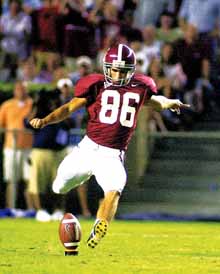
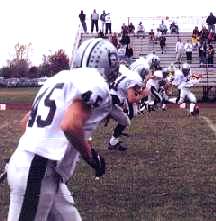
Offense
The offense is made up of the quarterback, one or two running backs,
wide receivers and/or tight ends, and the offensive line.
Defense
The defense is made up of cornerbacks, safeties, linebackers, and the defensive
line.
For a more detailed look at the offense
and defense, see the picture below.

These are some of the most basic formations for the offense (split backs) and
defense (4-3).
Offense: Running the
ball
The offense has two options for offensive plays: running and passing. Running
the ball is usually done by one of the running backs. They simply take the ball
from the quarterback (after he snaps it from the center) and run as fast and
as far as they can towards the other team's end zone until they are taken down
(tackled). In some cases, if the quarterback cannot pass the ball to anyone
open (see Offense: Passing the ball) he can start running the ball
himself.
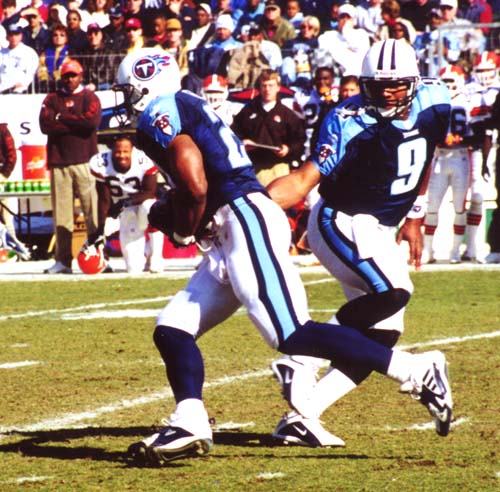

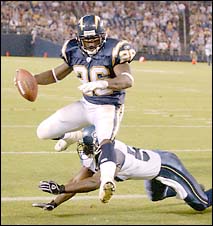

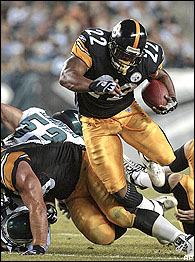
Offense: Passing the
ball
The offense can also pass the ball on offensive plays. After receiving the snap,
the quarterback takes a few steps backwards and looks around for an open receiver.
The receiver is usually one of the wide receivers or the tight end; sometimes
it can be the running back(s). As soon as the quarterback finds someone to pass
it to, he throws the ball to that person. If they catch it, then they try to
run towards the defense's end zone. If they cannot catch it and it hits the
ground, it is ruled a dead ball and a down is used up. There are 4 downs for
each team; it starts out 1st (down) and 10 (yards) and if the offense cannot
make 10-yards of forward progress in 4 plays, it is turned over to the other
team. However, on 4th down, the offense can also punt the ball or kick a field
goal (see Offense- Kicking/Punting the ball). When a ball is thrown,
a defensive player can catch it (called an interception) and can run towards
the offense's end zone.




Offense: Kicking/Punting
the ball
On 4th downs, it is usually
wise for the offense to punt the ball if they are still in their own territory
(49 yard line and lower). The punter backs up about 15 yards and after receiving
the snap, takes the ball, drops it, and kicks it as hard and as far as he can.
The defense, who should have one returner far back, returns the ball like they
would return kickoffs. After the defender is tackled, the offense for that team
comes onto the field and starts playing normally.
On 4th downs, if the offense is within 40-50 yards to their endzone, they can
kick a field goal for 3 points. The team's kicker comes out onto the field,
along with someone to hold the ball for him and the offensive line. The ball
is hiked to the holder, who holds the ball down for the kicker, who kicks it
as hard, as far, and as accurate as he can into the yellow goal posts. If he
makes it in between the two poles, it is ruled a successful field goal and the
offense is awarded 3 points.




Offense/Defense: Time-outs
When time is running out (there are 4 quarters,
each 15:00 long), the offense, defense, and even the coaches can call a time-out.
Time-outs stop the clock, and gives both teams a couple minutes to discuss plays
with their coaches, and to make substitutions.

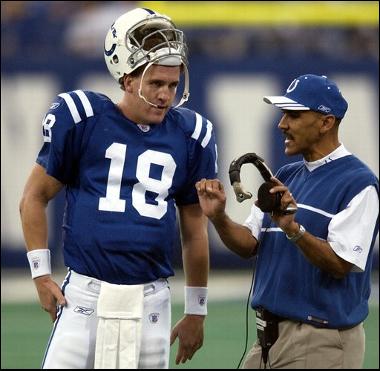
Defense: Turnovers
The defense can take the ball away from the offense in several ways.
First, if the quarterback throws a pass, the defense can attempt to catch it
instead of the offense (this would be called an interception, and after the
intercepter is tackled, his team's offense takes the field). Second, the ball
can be jarred out of the running back's (or WR's or QB's) hands, and it is ruled
a fumble. When a fumble is caused, both teams must scramble to get the ball.
If the offense comes out with the ball, there is a loss of down and play continues.
If the defense recovers the ball (and if the recoverer of the fumble is tackled),
the team's offense takes the field and play continues normally.




Back to Top
Home




















